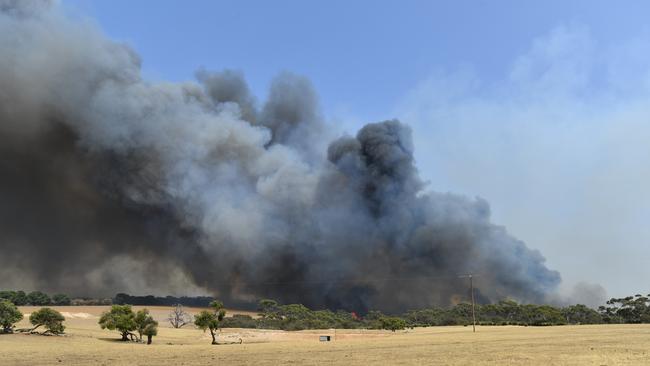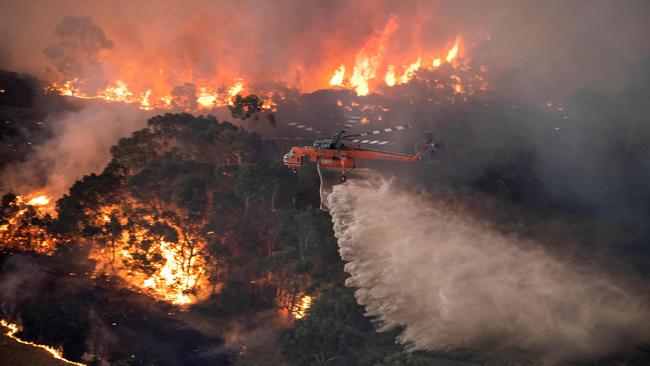New research reveals deaths and costs from smoke inhalation during Summer 2019/2020 bushfires
The smoke from last summer’s bushfires killed even more people than the flames did, with the full health cost of the horrific season only just coming to light.
SA News
Don't miss out on the headlines from SA News. Followed categories will be added to My News.
More South Australians died from smoke linked to last season’s devastating bushfires than in the blazes themselves, new research reveals.
A University of Tasmania-led study has found eight people in SA were victims of smoke-related deaths in addition to the three fatalities at the height of the horror Adelaide Hills and Kangaroo Island fires.
The research shows the state’s estimated smoke-related health costs surpassed $35.8m.

Nationally, the figure was $1.95bn, which is more than three times the expense of Australia’s second most costly bushfire season in 2002-03.
Country Fire Service chief officer Mark Jones said new science and research provided an opportunity to review firefighting strategies.
He said that might include fighting fires more aggressively and the future of hazard-reduction burns.
“We have to do our best to fight the fires and get them out as quickly as we can but we recognise the effect upon everyone, not just the people who regrettably lose property and get harmed,” Mr Jones said.
“If the science indicated these areas were problematic then it is something we would have to consider in the future.”
The research shows there were 429 smoke-related deaths and 3230 hospital admissions across Australia in the 2019-20 bushfire season.
They were in addition to the 26 deaths caused directly by the fires.

Professor David Bowman, from the University of Tasmania, said the study would help change debates about bushfire prevention from “fuzzy concepts and worrying about furry animals”. “We’re now moving it into numbers, dollars – that has policy traction,” Prof Bowman said.
He said the Black Summer could prove a game changer for bushfire management because it directly affected so many people in urban centres. “Half the Australian population or thereabouts were exposed to injurious levels of smoke,” he said.
Asthma Australia is calling for a public education campaign about the health risks associated with poor air quality, modelled on the Cancer Council’s sun-smart “Slip, Slop, Slap” campaign.
Its chief executive, Michele Goldman, said although asthmatics could have attacks during any type of conditions, bad air quality days could prompt anxiety, which in itself could trigger a bout in some people.
